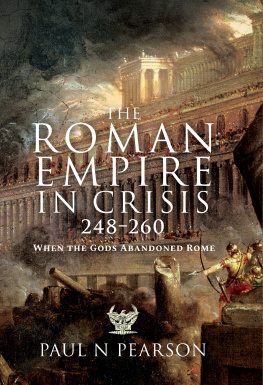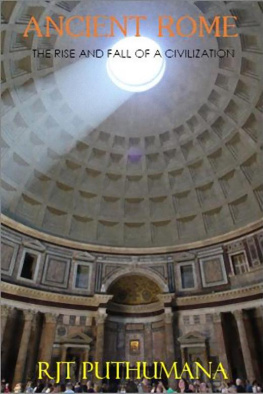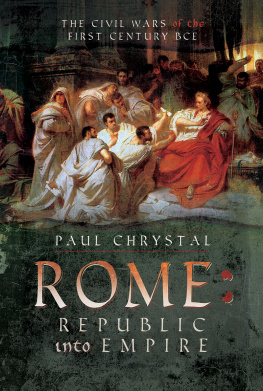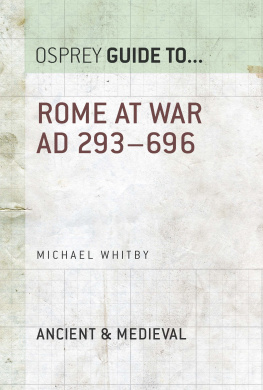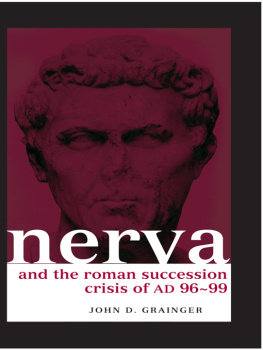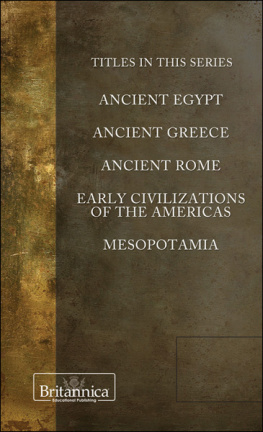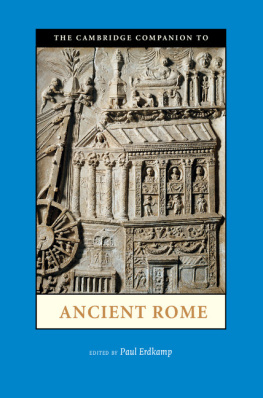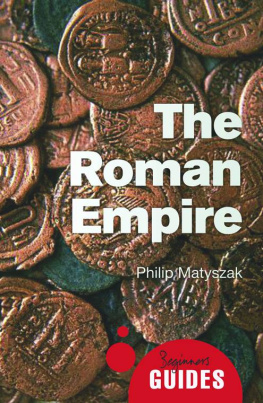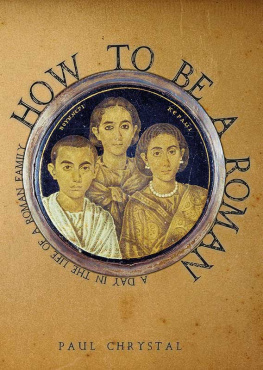Pagebreaks of the print version

The Roman Empire
in Crisis, 248260
The Roman Empire in Crisis, 248260
When the Gods Abandoned Rome
Paul N Pearson
First published in Great Britain in 2022 by
Pen & Sword Military
An imprint of
Pen & Sword Books Ltd
Yorkshire Philadelphia
Copyright Paul N Pearson 2022
ISBN 978 1 39909 097 1
eISBN 978 1 39909 097 1
Mobi ISBN 978 1 39909 097 1
The right of Paul N Pearson to be identified as Author of this work has been asserted by him in accordance with the Copyright, Designs and Patents Act 1988.
A CIP catalogue record for this book is available from the British Library.
All rights reserved. No part of this book may be reproduced or transmitted in any form or by any means, electronic or mechanical including photocopying, recording or by any information storage and retrieval system, without permission from the Publisher in writing.
Pen & Sword Books Limited incorporates the imprints of Atlas, Archaeology, Aviation, Discovery, Family History, Fiction, History, Maritime, Military, Military Classics, Politics, Select, Transport, True Crime, Air World, Frontline Publishing, Leo Cooper, Remember When, Seaforth Publishing, The Praetorian Press, Wharncliffe Local History, Wharncliffe Transport, Wharncliffe True Crime and White Owl.
For a complete list of Pen & Sword titles please contact
PEN & SWORD BOOKS LIMITED
47 Church Street, Barnsley, South Yorkshire, S70 2AS, England
E-mail:
Website: www.pen-and-sword.co.uk
Or
PEN AND SWORD BOOKS
1950 Lawrence Rd, Havertown, PA 19083, USA
E-mail:
Website: www.penandswordbooks.com
Acknowledgements
I thank Cardiff University for supporting my investigations through the provision of an Honorary Professorship. Jesper Ericsson of the Hunterian Museum in Glasgow was very helpful in arranging photography of the Sponsian coin and several other associated pieces, and discussed their significance. Aleksander Bursche provided helpful input relating to his discoveries of Roman gold in Eastern Europe and commented on the relevant text sections. I am grateful to Jana Gruskov and Otto Kresten for permission to reproduce photographs of the Vienna Palimpsest with spectral imaging, as made at the sterreichische Nationalbibliothek by the Early Manuscripts Electronic Library Project FWF P24523-G19; and also Gunther Martin for discussion of the Scythica Vindobonensia . I am grateful to the staff of the Maltepe Open Air Museum in Plovdiv District, Bulgaria, for kindly arranging access to that fascinating site before the formal opening, and also the staff of the Regional History Museum at Razgrad for discussions regarding the topography of Roman Moesia and the battlefield of Abritus. I am very grateful to Bridget Wade for her support and discussion throughout the project and helping interpret the archaeological sites in Plovdiv. Peter Davies, Christine Dubery, Diana Frost and Trisha Humphreys of the Crewkerne Ancient History Group contributed to various convivial discussions while the work was in development. Thanks also to Phil Sidnell, Matt Jones and Chris Trim for their efficient and professional work seeing the manuscript through to publication.
List of Plates
.
Vienna palimpsest from Martin and Gruskov (2014), Vienna, Osterreichische Nationalbibliothek, Hist.gr. 73, fol. 195r, spectral imaging by the Early Manuscripts Electronic Library. Project FWF P24523-G19, public domain. Bust of Decius, Capitoline Museum, Rome, public domain. Libellus modified from Claytor (2015) courtesy of Luther College, Iowa, public domain. Other photographs, the author.
. Photographs, the author.
). E, coin of Herennia Etruscilla (Roma Numismatics). F, detail of the female figure on the lid (Landesmuseum, Mainz, public domain). G, bust of Herennia Etruscilla (British Museum 1873,0820.734, public domain). H, detail of captured barbarian, possibly Ostrogotha (photograph by Jastrow, public domain).
The Battlefield of Abritus. Satellite image: Google Earth. Photographs: the author. Pierced coin of Decius with permission, Warszawskie Centrum Numizmatyczne 54/11.
. Coin of Silbannacus, British Museum 1937,1203.1.
. Bust of Odaenathus, Lord of Tadmor (Ny Carlsberg Glyptotek (Carole Raddato, CC-Share Alike license, public domain). Naqsh-i-Rustam relief carving (Diego Delso, delso. photo License CC-BY-SA).
.
List of Maps
The Roman Empire in the mid-third century (modified from Pearson 2016).
Possible line of Ostrogothas invasion of 248 CE based on the Getica of Jordanes and coin hoards.
The Battle of Verona, 249 CE . Decius drew his strength from the armies of the Danube. Philip commanded the imperial forces from Rome.
Reconstruction of the invasion of Argaithus and Guntheric and the sieges of Marcianopolis and Philippopolis, 250 CE . Ostrogotha may have been campaigning simultaneously in Roman Dacia. The Battle of Galtis between Goths and Gepids is based on Jordanes.
Reconstruction of the opening moves on the Danube in 251 CE according to the interpretation preferred here. The Goths began operations in midwinter with a surprise attack on the key crossing point at Oescus. Ostrogotha then marched into Roman Dacia while Cniva on the south bank divided his force. He led one division toward the legionary base at Novae, leaving the other division (Div. 3) free from interference to plunder part of Moesia. In response, Trebonianus Gallus, the dux (regional commander) concentrated his forces at Novae.
The Battle of Novae, 251 CE . Cniva was repulsed by Gallus and moved on to besiege Nicopolis as Decius and his powerful strike force arrived in the area.
The Battle of Nicopolis, 251 CE . Decius re-captured Oescus then attacked Cniva who then retreated south across the Haemus by the Shipka Pass. The third Gothic division began to besiege Priscus in Philippopolis.
The Battle of Beroe, 251 CE . The Third Division of Goths under an unknown commander commenced the siege of Philippopolis. Gallus was ordered to Oescus to hold the crossing. Decius crossed the Haemus Mountains via the Shipka Pass but his vanguard was destroyed by Cniva in the vicinity of Beroe.
The siege of Philippopolis, 251 CE . Decius retreated to join Gallus at Oescus while Cniva linked up with the besieging force.
The assault on Philippopolis, 251 CE . Urban plan based on Mateev (2016). Arrow shows the suggested Gothic attack up Nebet Tepe hill.
Suggested background to the hypothetical Battle of Romula, 251 CE . Ostrogotha moved south tracked by the Dacian legions while Decius blocked his approach somewhere before Romula-Malva and fought a defensive battle there. Ostrogothas advance facilitated Cnivas flight from Philippopolis.
The developing situation in Moesia prior to the Battle of Abritus in 251 CE . Decius started in pursuit of Cniva while Gallus was posted downstream to Durostorum to block the likely escape route.
The final move before the Battle of Abritus in 251 CE . Cniva avoided the Roman pincer by selecting a battlefield on the road to Sexaginta Prisca.
The battle of Abritus, 251 CE . According to this authors interpretation, the three divisions of the Gothic army spread out across the progressively constricting valley with their left flanks pinned against the cliffs. The Roman army arrived from the direction of Abritus and attempted to advance up the valley, destroying the enemy in the process.

